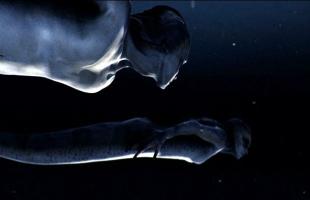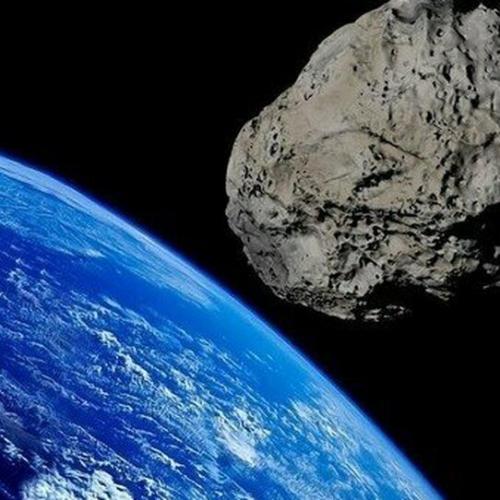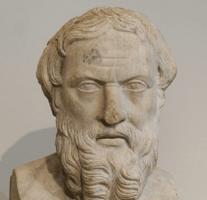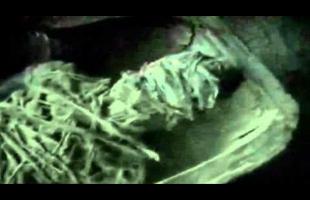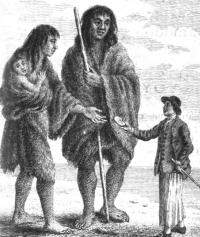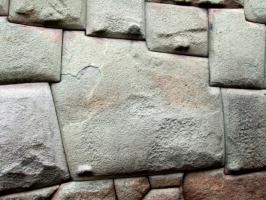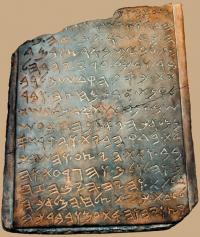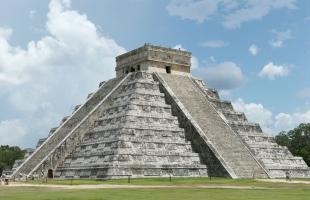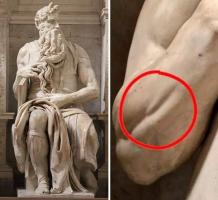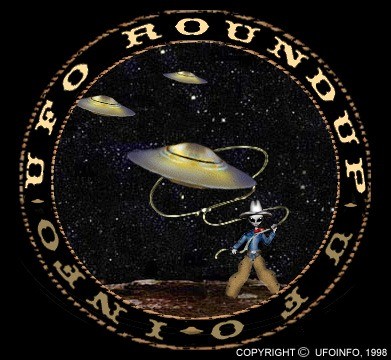Did America's Third Empire Really Exist? The mystery of the Omagua culture

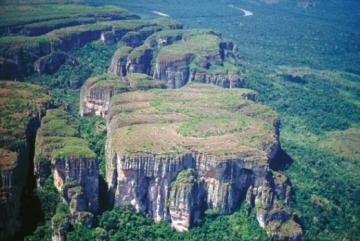
The first historical data of the existence of a confederation of tribes, later called Omagua, that lived in the enormous unknown territories east of the Andes, dates back to 1530, when commander Diego de Ordaz crossed the Orinoco River (now called Marañón), in search of gold and precious stones.
According to some, it was precisely Diego de Ordaz who, with his first exploration of the Orinoco, fueled the legend of El Dorado, based on the stories of the indigenous people, which he found during the navigation of the great river. He left San Lucar de Barrameda on October 20, 1530, to reach the mouth of the Orinoco after a month of navigation. He sailed it for six hundred miles until he reached an indigenous village called Huyapari. The expedition then continued by land until reaching the mouth of the Meta River. Here he had contact with natives who adorned themselves with emeralds as thick as a fist.
There were versions according to which, advancing through the jungle for fourteen days in a southwesterly direction, he reached an emerald mountain called the Euphoide rock. Next, a passage from Fray Pedro Simón's Historical News of the Conquests of the Mainland is recounted, which narrates the Castilian's undertaking:
A few days before the arrival of Commander Diego de Ordaz to this gulf and the mouths of the great river, a canoe and four indigenous people had been seen, who had with them an emerald stone as big as a hand. When they were asked where they had found it, they replied that by sailing up the river for a few days, they reached an entire mountain of emeralds. Once he received this news, Captain Diego de Ordaz decided to begin his discovery from that place.
The rock was never discovered, either due to continuous attacks by ferocious indigenous people, or due to internal conflicts between the components of the expedition, some of whom wanted to return to the Orinoco. Ordaz, finding himself in a difficult and hostile environment, decided to return to the Orinoco, where he had left a contingent guarding the ships, thus becoming the first European to navigate and explore the great Venezuelan river.
Upon his return to the delta, in 1532, Diego de Ordaz founded, at the confluence of the Caroni River with the Orinoco, the town of Santo Tomé de Guayana, where the city of Puerto Ordaz (Ciudad Guayana) is today. A few weeks later he died due to a devastating illness.
The story of his trip served as the basis for successive expeditions, and although much of the information about the richness of the places found was excessively exaggerated, he was always remembered as one of the explorers most interested in geography and the description of the American lands.
During the years following the conquest of Peru, the sovereign of Spain, Charles V, who was constantly lacking funds, sought the support of some European financiers to sponsor new expeditions. Consequently, German bankers Wesler made loans to him. In compensation, the Wesler family was allowed to exploit Venezuela economically. Naturally, his main interest was the legendary city of El Dorado, which was talked about so much in Europe in those years. One of the adventurers the Weslers sent to Venezuela was George Hohermoth, originally from Speyer. His name was Spanishized into Jorge Espira.
He was accompanied by another German explorer, whose name was Philipp Von Utten, later called Philip of Utre.
His expedition left Coro in 1535 with the objective of finding El Dorado or at least a quantity of gold and precious stones sufficient to compensate the bankers for the loan made to Charles V, since the possibility of obtaining direct compensation from the king was uncertain. A troop of three hundred men and one hundred horses traveled along the Toyuco River through the Andes and descended to the Meta plateaus in present-day Colombian territory.
During the march there were violent clashes with indigenous Choques, Guaiquevies and Chiscos, but the greatest losses were due to the devastating malaria and violent fevers that attacked the Europeans. Jorge Espira camped in Meta, where he spent the winter of 1536. During long rainy months, the Europeans were often attacked by other indigenous groups and were frequently forced to defend themselves from jaguar attacks that killed several horses. With the end of the rains, they began to travel along the course of the Ariari River, which they believed would take them to the mythical city.
They successively traveled along the course of the Guayare, but instead of finding the city of El Dorado, they found a group of Guayupe indigenous people, hostile and warlike. There was a bloody battle and the Europeans, despite huge losses, emerged victorious. The Guayupes village was then completely destroyed and all the indigenous people were killed.
Then, the European conquerors continued to advance and found a tribe of Papemenes, who welcomed them friendly. Subsequently, there was, however, another confrontation with Choques indigenous people, violent and anthropophagous.
The Europeans, who had run out of gunpowder, fought with swords and many died in the fierce battle.
Colonel Joaquín Acosta, in his book Discovery and Colonization of New Granada (1901), describes these natives like this:
The Choques were dirty, ferocious and fed on human flesh. As weapons they used sharp bones of their enemies, placed on long bamboo poles. Captain Jorge Espira sent Esteban Martín, along with other soldiers, to explore the lands located to the west and south. They did not take horses to go lighter and this was the reason why they could not break the ranks of a squad of several Choques, who resisted the battle, killed Esteban Martín and his deputy and forced the other Spaniards to retreat, leaving to many soldiers. The Shocks were determined and fierce in battle. When the invaders withdrew, they remained motionless in the rain as if to defend their own domain.... On this occasion, it was clearly seen that the Europeans without firearms or horses were very vulnerable. The gunpowder had run out and the harquebuses, now useless, represented only a useless burden.
Jorge Espira realized that it was no longer possible to continue advancing, also because new tribes of Choques were ready for other battles, and he decided to return to Coro, thinking that he had almost reached the land of El Dorado. He believed that the Shockers were the guardians of the lost city, and asked the Weslers for other troops so he could organize a second enterprise.
His requests, however, were denied, since the losses of the trip had been exaggerated, and thus Jorge Espira died with the conviction that he had arrived just one step away from the mythical Dorado, but that he had not been able to see it or conquer it.
Meanwhile Felipe de Utre trembled about leaving again. In 1540 he asked to be recognized as governor of Venezuela, but was only granted the title of captain general. He soon organized a new expedition, in which he was accompanied by Bartholomew Wesler. He advanced along the valleys of the Orinoco basin beyond the Andes, and reached Meta, to the sources of the Motoya and Payoya rivers, where he entered the land of the Mayans. From them he learned that at the confluence of the Motoya and Guacaya rivers was Ocuarica, the fantastic city of the Omagua.
Felipe de Utre, who believed he was close to the goal, after having crossed the Guaviare arrived at a town called Macatoa, inhabited by Guayupe tribes. In a passage from the book Historial News of Tierra Firme, written by Fray Pedro Aguado in the last years of the 16th century, it is said that:
They walked for five days crossing harsh lands and vast forests, then they saw in the distance a large city in the center of which there was a castle that in size and height surpassed the others many times over: the Quarica fortress, Lord of Omagua.
The friar Pedro Aguado narrated that Cacique Quarica carried with him gold idols as big as children, and that his wife was completely covered in gold. These tribal groups blocked the way for Felipe de Utre who, after heavy losses, was forced to withdraw and return to Venezuela, where he arrived in 1545, after five years of absence. In Coro, meanwhile, a new governor had been appointed, the Spanish Juan de Carvajal. After several discussions with the governor himself, the German was beheaded in the recently founded village of El Toyuco, in 1546.
After an exhaustive geographical and anthropological study, it was concluded that Felipe de Utre had explored the territory of the Carijona, beyond what is now called the Apaporis River, a tributary of the Caquetá River. The almost mystical vision in which Felipe de Utre observes from afar a city of temples and golden palaces that he believed to be El Dorado, was interpreted in the 19th century by the famous Italian geographer and cartographer Agustín Codazzi, in his work Physical Geography and politics of the United States of Colombia, such as:
a group of rocks and granite pinnacles of strange shapes that exist in the vicinity of the Macaya River. From afar they look like buildings, ruins of fortresses, stone towers...
Most likely, Felipe de Utre was observing the Serranía de Chiribiquete from afar, the ancestral land of the Carijona, which today is part of a national park in Colombia, in the department of Caquetá.
The next description of the Omagua was that of Gaspar de Carvajal, the chaplain of Francisco de Orellana on his journey across the Amazon River in 1542. On May 21 they arrived at the confluence of a river that entered from the right side. Three islands delimited the estuary. Brother Gaspar de Carvajal called it the Río de la Trinidad (Río Juruá). On the banks near the convergence of the two rivers there were large towns.
Orellana realized that they were in the mythical territory of the Omagua, just as Aparia the great had described it to him. From the river one could see large malocas and an abundance of finely carved amphorae. Was that the legendary El Dorado? Here is a description of Gaspar de Carvajal's book Relation of the new discovery of the famous Rio Grande that Captain Francisco de Orellana discovered by very great fortune (1542):
On the Sunday after the Ascension of Our Lord, we left said town and began to walk, and we had not gone two leagues when we saw another very powerful and larger river entering the river on our right hand: it was so large that at the entrance to three islands, because of which we named it the Trinidad River; and in these joints on both sides there were many and very large towns and very beautiful and very fruitful land: this was already in the dominion and land of Omagua, and because the towns were so many and so large and there were so many people, he did not want to The Captain took port, and so we spent the whole day in the town with some war, because the water was so rough that they made us go through the middle of the river; and many times the Indians would start talking to us, and since we didn't understand them we didn't know what they were telling us...
From current knowledge, acquired not only thanks to the study of ancient documents and books, but also from the archaeological evidence found in the Serranía de Chiribiquete, it is deduced that the Omagua dominated a large part of the Amazon basin (which now belongs to the countries of Colombia, Brazil and Peru).
They practiced large-scale agriculture and were dedicated to crafts, producing ceramic amphorae and gold jewelry. The name Omagua perhaps meant deformed head. Indeed, these indigenous people used to disfigure the skulls of children, tightly tying their heads with bandages, for religious reasons or to distinguish one clan from another. Some researchers who extensively studied the ceremonial mounds present in the Colombian department of Meta, speak of a disappeared culture, which dominated, until 1650, the immense territories of the Orinoquía and Colombian Amazon.
Can we think that the Omagua culture was a kind of confederation of tribes and that therefore it was the long-awaited “third empire of America”, as the Spanish conquerors called it (after theAztec and theInca )? This kind of confederation of tribes really existed, as demonstrated by Gaspar de Carvajal's report in 1542. Most likely, these indigenous people belonged to the Caribbean ethnic group, had a common government and lived in villages quite distant from each other, but united. along ancient trails, such as the Nhamini-wi, which connects Colombia with Roraima.
It is thought that Chiribiquete was the center of their culture, which in subsequent centuries was inhabited by the Carijona, indigenous people of the Caribbean ethnic group. History and archeology books do not describe the Omagua as a confederation of tribes, since this ancient people was decimated by the viruses of which the European invaders were unconscious carriers. Since the first voyages of the German conquistadors and Francisco de Orellana, smallpox viruses and other diseases spread among the Amazonian natives, but especially after 1680, with the incursions of the Spanish Jesuits (from from Quito) and the Portuguese religious (from Belém), viruses and bacteria spread more and more, forever erasing the ancestral culture of the Omagua.
The last direct testimony of the Omagua culture dates back to the last years of the 17th century, when Father Samuel Fritz toured the territories of the Amazon River at the confluences with the Putumayo, Juruá, Purús and Caquetá tributaries. It is thought that later, starting in the 18th century, the survivors of the Omagua ethnic group entered the depths of Caquetá, taking refuge in their ancestral lands of Chiribiquete, where their ancestors, many centuries before, had made beautiful cave paintings in the caves of the area (see the first three photos above right). The Carijona survive even today, but the archaeological and ethnographic study of their culture is particularly complicated because, unfortunately, their region (department of Caquetá) is only now overcoming a long period of instability and insecurity.
Consequently, the mystery of the existence of the Amazonian El Dorado, of the Omagua culture and of the so-called “third empire of America”, is locked in one of the most inaccessible areas of the planet, the Chiribiquete National Park, often called “the lost World". Only with serious archaeological and ethnographic studies will it be possible to reveal, in the future, the reality of an almost unknown ethnic group that, in addition to gold, made great use of medicinal plants and healing herbs, the use of which was lost in time.
YURI LEVERATTO









